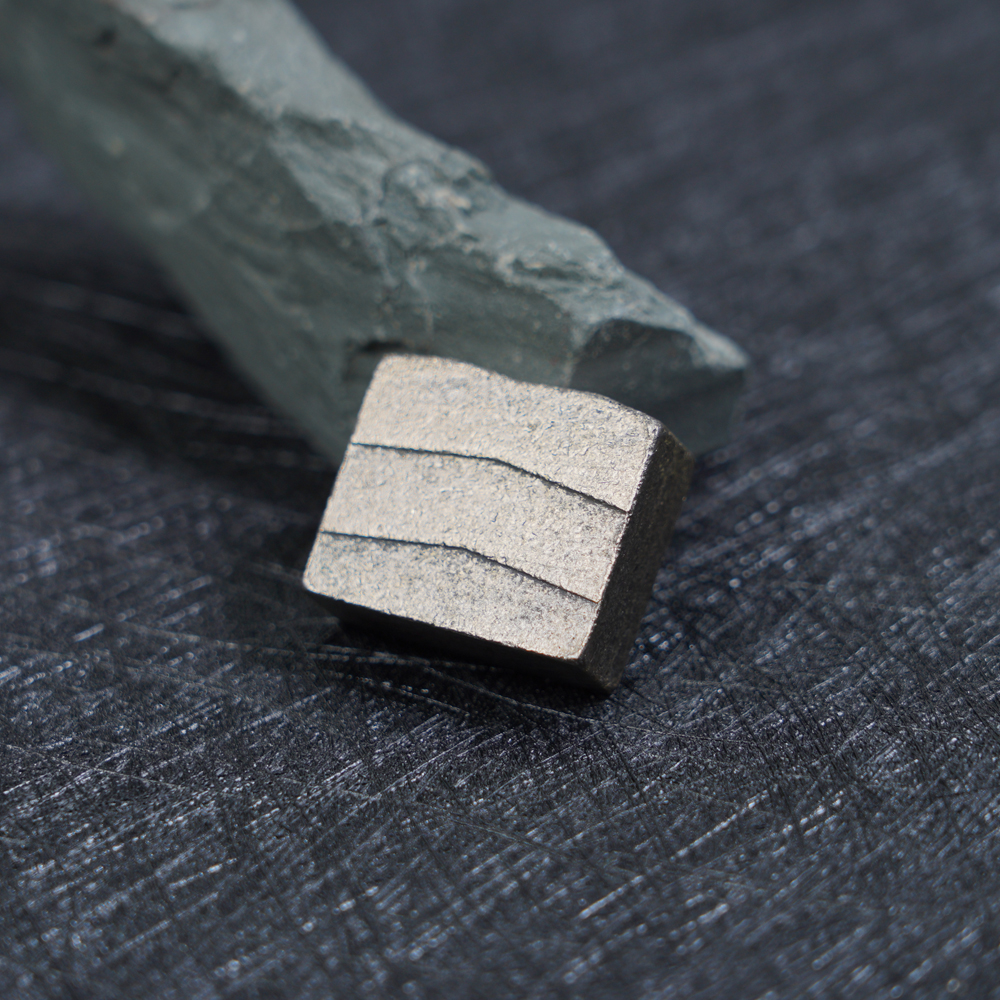The density of diamond segments can be calculated by the following method:
Firstly, determine the mass of the diamond segment in grams.
Measure the volume of the diamond segment in cubic centimeters or cubic meters.
Calculate the density using the following formula:
Density = mass / volume
Among them, the unit of density can be gram/cubic centimeter (g/cm³) or kilogram/cubic meter (kg/m³).

Note that diamonds typically have a density between 3.5 and 3.53 grams per cubic centimeter. The specific density depends on the type and preparation method of diamond. Therefore, in actual calculations, known diamond density values can be used, or the actual measured mass and volume can be substituted into the formula for calculation.
So what happens if the density of the segment is too low?
If the density of the diamond segment is too low, it may lead to the following situations:
Reducing cutting efficiency: Diamond segments with low density may not provide sufficient cutting force and stability, leading to a decrease in cutting efficiency. The segment may deform or lose cutting ability when in contact with the workpiece, thereby affecting cutting speed and quality.
Reducing wear resistance: Diamond segments with low density may not be able to withstand significant cutting forces and wear, resulting in a decrease in their wear resistance. The segment may wear out or lose diamond particles faster, thereby reducing the life of the segment.
Reduce the strength of the segment: Diamond segments with low density may be prone to fracture or fragmentation during the cutting process. The strength of the segment is influenced by density, and low density may cause the segment to be unable to withstand cutting stress, leading to damage.
Instability: Diamond segments with low density may exhibit unstable performance during use. It may be more susceptible to external factors such as vibration or impact, leading to segment failure or unexpected situations.
Reduce cutting quality: Diamond segments with low density may not provide sufficient cutting accuracy and smoothness, resulting in rough or uneven cutting surfaces. The instability of the segment and the decrease in cutting ability may affect cutting quality, especially in applications with high precision requirements.
Therefore, maintaining an appropriate density of diamond segments is crucial for their performance and lifespan. Low density may lead to problems such as reduced cutting efficiency, reduced wear resistance, decreased segment strength, instability, and reduced cutting quality. The key to ensuring the performance and lifespan of diamond segments is to choose appropriate density and use and maintain them correctly.





